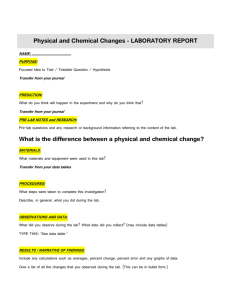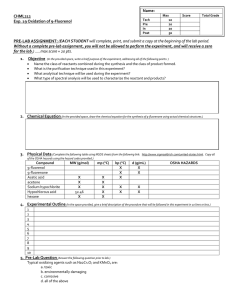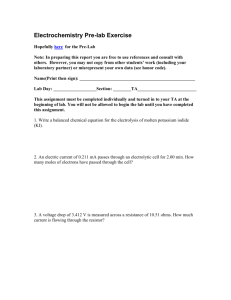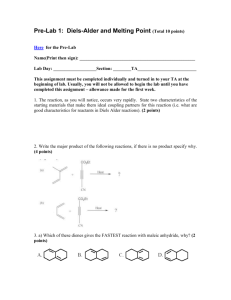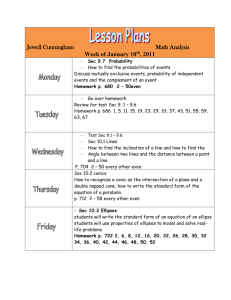Experiment #13 Speed of Sound Pre-lab Questions
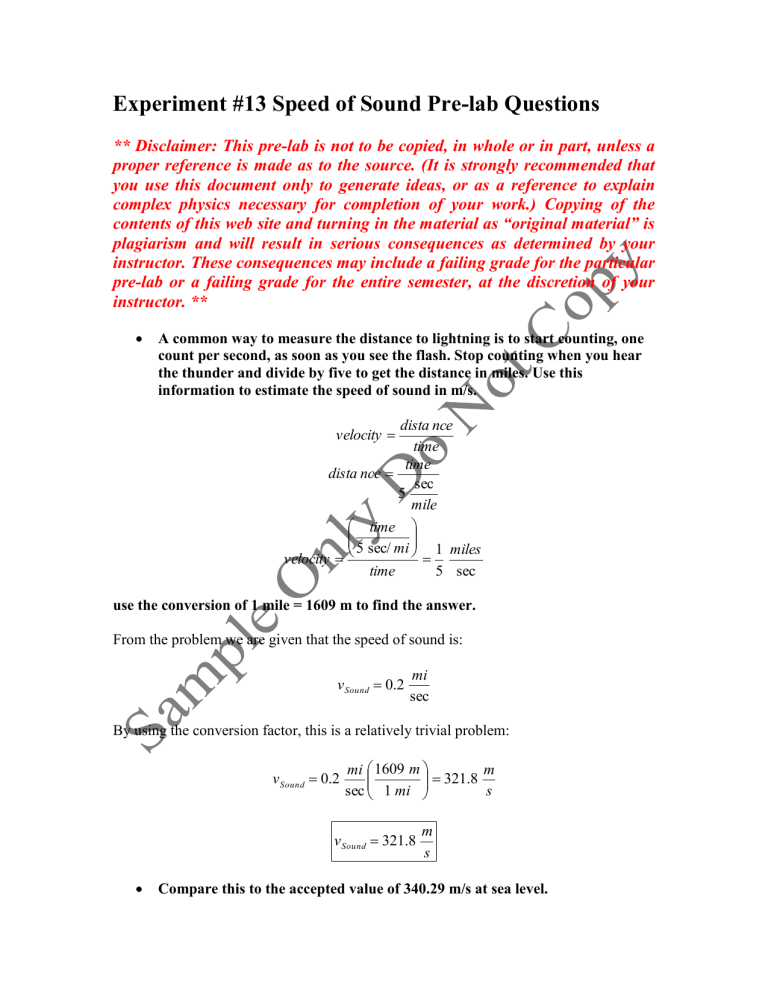
Experiment #13 Speed of Sound Pre-lab Questions
** Disclaimer: This pre-lab is not to be copied, in whole or in part, unless a proper reference is made as to the source. (It is strongly recommended that you use this document only to generate ideas, or as a reference to explain complex physics necessary for completion of your work.) Copying of the contents of this web site and turning in the material as “original material” is plagiarism and will result in serious consequences as determined by your instructor. These consequences may include a failing grade for the particular pre-lab or a failing grade for the entire semester, at the discretion of your instructor. **
A common way to measure the distance to lightning is to start counting, one count per second, as soon as you see the flash. Stop counting when you hear the thunder and divide by five to get the distance in miles. Use this information to estimate the speed of sound in m/s. velocity
dista nce time velocity dista nce
5
time time sec
5 mile time sec/ mi
1
5 miles sec use the conversion of 1 mile = 1609 m to find the answer.
From the problem we are given that the speed of sound is: v
Sound
0 .
2 mi sec
By using the conversion factor, this is a relatively trivial problem: v
Sound
0 .
2 mi sec
1609
1 mi m
321 .
8 m s v
Sound
321 .
8 m s
Compare this to the accepted value of 340.29 m/s at sea level.
We can perform a percent difference to compare the approximate speed of sound, used to tell how far away lightning is, to the accepted value at sea level.
% difference
v
Theory
v
Measured v
Theory x 100 %
% difference
340 .
29 m s
321
340 .
29 m s
.
8 m s x 100 %
% difference
5 .
434 %
So, we can see that the estimate is a little “off”; but that’s ok, because of its simplicity. If we were to say take the time and divide it by 4.6 seconds … that’d be a lot harder to do in a moments notice.
Given the “necessity” for accuracy, this is still a fairly good approximation for determining the speed of sound. (With regards to the next question below, have you ever notices that the temperature drops during a thunder storm? Do you think this would have an impact on the value of the speed of sound?)
The speed of sound in air depends on the temperature of the air: v
Sound
331 .
4 m s
0 .
6 s m o
C
Temp
o Compute the speed of sound at 0 O C. o Compute the speed of sound at 1 O C. How many meters per second does the speed of sound increase for every degree Celsius?
At zero degrees centigrade, the speed of sound is: v
Sound
331 .
4 m s
0 .
6 s m o
C
0 o C
v
Sound
331 .
4 m s
At one degrees centigrade, the speed of sound is: v
Sound
331 .
4 m s
0 .
6 s m o
C
v
Sound
332 .
0 m s
For every increase of the temperature by 1 degree centigrade, the speed of sound increases by 0.6 m/s. (Notice this is the slope of the line for the equation given above.)
